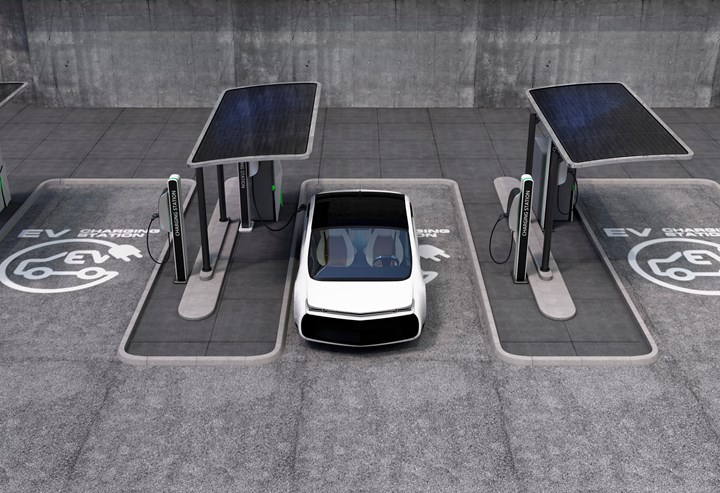Arkema Announces High Voltage Coating Solutions for Electric Vehicles
Arkema has introduced new advanced materials with UL certifications for busbar insulation.
#automotive
Edited by Scott Francis

Arkema has announced that it has been granted UL Yellow Card certification for two new polyamide 11 powder coating grades for use in electric vehicle battery systems and other applications. (Rilsan polyamide 11 is a versatile polymer that is 100 percent bio-based, derived from castor oil.)
- Rilsan T Orange 7706 is a primerless fluid bed dipping grade designed to achieve high thickness (500 µm) in one dip.
- Rilsan ESY Orange 7705 is a primerless electrostatic coating grade for components that require thinner insulation.
“The development of these two new polyamide coating grades will allow designers to easily protect their electrical systems in accordance with requirements for hybrid and electric vehicles,” says Jerome Porte, global market manager at Arkema.
Both grades achieved CTI ratings in excess of 600 volts and fire resistance class UL 94 V-0. In addition, the materials are said to offer ease of processing due to their high level of flexibility and ability to be easily masked.
“The new grades were launched to address specific requirements from the H/EV market due to limitations with traditional insulation materials such as epoxies,” adds Porte.
Arkema also offers grades of Kepstan PEKK, an extremely high-performance polymer, for electrical applications requiring temperatures too high for other polymers. Kepstan PEKK will also provide better thermal runaway resistance compared to existing solutions. With melt temperatures in excess of 300°C, the most stringent requirements can be addressed utilizing polyaryletherketones like PEKK. Kepstan PEKK grades offer high polarity that enables excellent adhesion to metal without a primer, a low dielectric constant (2.9) for outstanding insulation, and flexibility of manufacturing options allowing the insulation to be applied via powder coating, extrusion, or overmolding.
RELATED CONTENT
-
Understanding Infrared Curing
Infrared cure is gaining increased attention from coaters as a result of shorter cure cycles and the possibility of smaller floor space requirements when compared to convection oven curing.
-
Curing Oven Basics
Simply heating up the substrate does not cure the coating. There are many variables to consider when choosing the best cure oven for your application...
-
Preparation of Stainless Steel for Powder Coating
Should type 316 stainless steel castings be sandblasted before powder coating, or can they be chemically etched? Should the parts be pre-heated in an oven before coating?
















